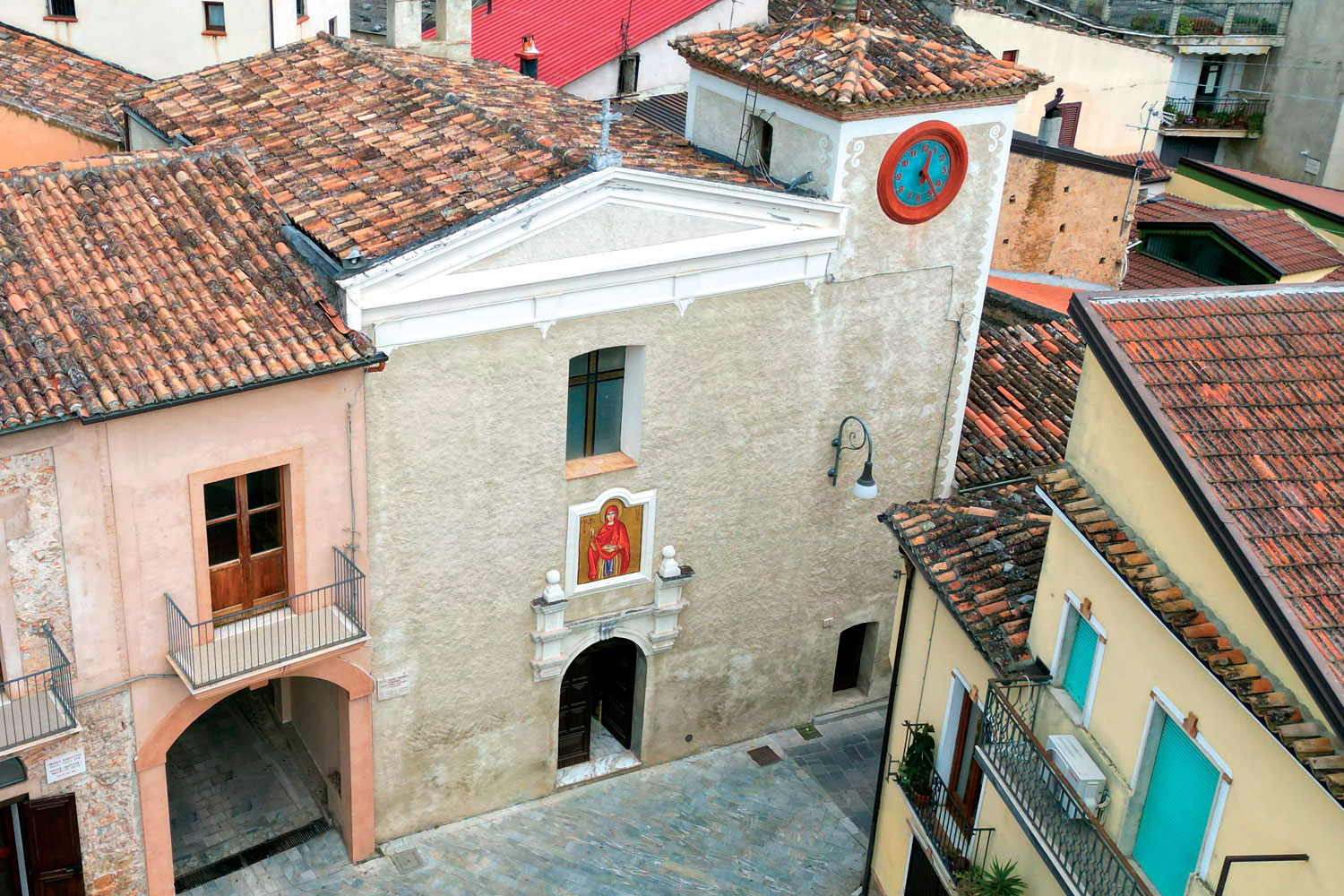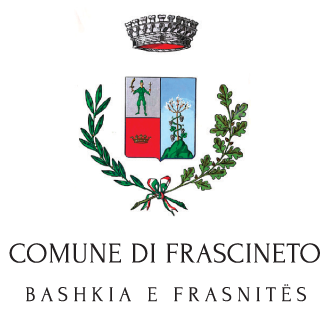Cappella di Santa Lucia

Situata in piazza Scanderbeg, la cappella, intitolata originariamente alle Anime sante del Purgatorio, fu costruita intorno al 1552 su una struttura preesistente. La pianta è a croce latina; l’interno, a navata unica, è in stile barocco. Si caratterizza per un mosaico raffigurante la martire siracusana sulla facciata e una preziosa iconostasi in marmo policromo intarsiato, con fregi superiori e porte di legno su cui sono collocate le sacre immagini “scritte” da Josif Droboniku. Sulle pareti laterali sono, invece, disposte le icone con scene della vita di santa Lucia. Numerose le testimonianze orali relative alle messe dai morti, celebrate di notte nella cappella, soprattutto nella ricorrenza della Commemorazione dei defunti, festa a data mobile dipendente dalla Pasqua, che il calendario liturgico bizantino colloca in prossimità del Carnevale e nel sabato precedente la domenica di Pentecoste.

CHAPEL OF SANTA LUCIA - Located in Piazza Skanderbeg, the chapel, originally dedicated to the Holy Souls in Purgatory, was built around 1552 on a pre-existing structure. It has a Latin cross plan; the interior, with a single nave, is in Baroque style. The façade features a mosaic depicting the Syracusan martyr, and inside there is a precious iconostasis made of inlaid polychrome marble, with upper friezes and wooden doors adorned with sacred images “written” by Josif Droboniku. On the side walls, there are icons illustrating scenes from the life of Saint Lucia. Numerous oral testimonies speak of masses for the dead, celebrated at night in the chapel, especially during the Commemoration of the Dead, a movable feast dependent on Easter, which the Byzantine liturgical calendar places near Carnival and on the Saturday before Pentecost Sunday.

KOPELA E SHËN LLUÇISË – Kopela, çë gjëndet te sheshi Skanderbek e një herë ish e kushtuar Prigatorëvet, qe e stisur afër vitit 1552 mbi një strukturë më të vjetër. Ka formën e kriqes lëtire e navata është e zbukuruar sipas stillit barok. Mbi derën e madhe, jashtë, gjëndet mozaiku i shënjtes sirakuzane; mbrënda, një ikonostaz i shtrënjtë marmuri, shumë kulluresh e me xhurrlluví, mbi ku gjënden ikonat ‘e shkruara’ nga Josif Droboniku, pasurohet me dier e zbukurime druri. Mbi muret, ka dí anët, ikona çë rrëfiejën gjellën e shën Lluçisë. Të shumta janë adhe martrí gojore mbi meshët e të vdekurvet, natën, mësegjithë te Java e Prigatorëvet, festë e lidhur me Pashkët bixantine.

Situata in piazza Scanderbeg, la cappella, intitolata originariamente alle Anime sante del Purgatorio, fu costruita intorno al 1552 su una struttura preesistente. La pianta è a croce latina; l’interno, a navata unica, è in stile barocco. Si caratterizza per un mosaico raffigurante la martire siracusana sulla facciata e una preziosa iconostasi in marmo policromo intarsiato, con fregi superiori e porte di legno su cui sono collocate le sacre immagini “scritte” da Josif Droboniku. Sulle pareti laterali sono, invece, disposte le icone con scene della vita di santa Lucia. Numerose le testimonianze orali relative alle messe dai morti, celebrate di notte nella cappella, soprattutto nella ricorrenza della Commemorazione dei defunti, festa a data mobile dipendente dalla Pasqua, che il calendario liturgico bizantino colloca in prossimità del Carnevale e nel sabato precedente la domenica di Pentecoste.

CHAPEL OF SANTA LUCIA - Located in Piazza Skanderbeg, the chapel, originally dedicated to the Holy Souls in Purgatory, was built around 1552 on a pre-existing structure. It has a Latin cross plan; the interior, with a single nave, is in Baroque style. The façade features a mosaic depicting the Syracusan martyr, and inside there is a precious iconostasis made of inlaid polychrome marble, with upper friezes and wooden doors adorned with sacred images “written” by Josif Droboniku. On the side walls, there are icons illustrating scenes from the life of Saint Lucia. Numerous oral testimonies speak of masses for the dead, celebrated at night in the chapel, especially during the Commemoration of the Dead, a movable feast dependent on Easter, which the Byzantine liturgical calendar places near Carnival and on the Saturday before Pentecost Sunday.

KOPELA E SHËN LLUÇISË – Kopela, çë gjëndet te sheshi Skanderbek e një herë ish e kushtuar Prigatorëvet, qe e stisur afër vitit 1552 mbi një strukturë më të vjetër. Ka formën e kriqes lëtire e navata është e zbukuruar sipas stillit barok. Mbi derën e madhe, jashtë, gjëndet mozaiku i shënjtes sirakuzane; mbrënda, një ikonostaz i shtrënjtë marmuri, shumë kulluresh e me xhurrlluví, mbi ku gjënden ikonat ‘e shkruara’ nga Josif Droboniku, pasurohet me dier e zbukurime druri. Mbi muret, ka dí anët, ikona çë rrëfiejën gjellën e shën Lluçisë. Të shumta janë adhe martrí gojore mbi meshët e të vdekurvet, natën, mësegjithë te Java e Prigatorëvet, festë e lidhur me Pashkët bixantine.
AUDIO GUIDA
AUDIO GUIDA
Galleria fotografica
Video Guida
Video Guida
Video LIS
Video LIS
Virtual Tour
Virtual Tour
Scopri il percorso bizantino




















